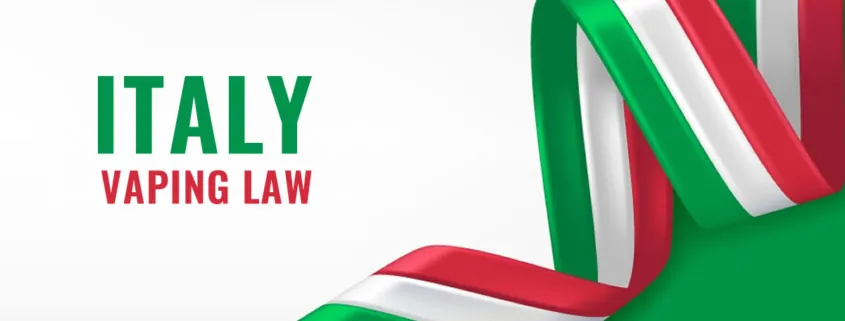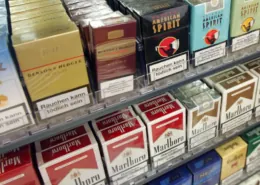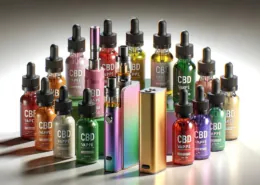Comprehensive Guide to Italy’s Vaping Laws
Italy, renowned for its rich culture and cuisine, also maintains a robust framework of vaping regulations. This guide provides essential information for vaping industry professionals and users navigating the Italian market.
General Legal Framework
- Legality: Vaping is legal in Italy, and e-cigarettes can be sold to individuals aged 18 and older. There are approximately 721,900 vapers in the country, representing an adult vaping prevalence of about 1.37%.
- Regulatory Compliance: Italy adheres to the European Union’s Tobacco Products Directive (TPD), which imposes various restrictions on vaping products, including age limits, advertising constraints, and nicotine concentration limits. The maximum allowed nicotine concentration in e-liquids is capped to mitigate the risk of nicotine addiction, particularly among youth.
Age Restrictions
Italian law strictly prohibits the sale of vaping products to individuals under 18 years of age1. This regulation applies to e-cigarettes, e-liquids, and all related vaping paraphernalia. Retailers who violate this law face significant penalties, including fines and potential loss of their business license. Vape shops and online retailers must implement rigorous age verification processes to ensure compliance.
Public Use Regulations
Italy’s public vaping regulations closely align with its smoking laws2. The government prohibits vaping in schools, hospitals, government buildings, and public transportation. While outdoor areas generally allow vaping, users should exercise caution and seek permission in restaurants and cafes. The phrase “È permesso svapare qui?” (“Is it allowed to vape here?”) proves useful in clarifying local policies.
Italy to Ban Indoor Vaping
Italy’s health minister, Orazio Schillaci, announced new measures against tobacco to prevent smoking and achieve a “tobacco-free generation”.
Smoking rooms indoors will be banned, and the ban on smoking in open-air places in the presence of minors and pregnant women will be extended.
E-cigarettes and heated-tobacco products will also be included in the ban, taking into account “the constantly increasing diffusion of new products on the market and the growing evidence on their possible harmful effects on health.” Plans to extend the cigarette advertising ban to new nicotine-containing products are also in place.
News source: Euractiv3
Nicotine Concentration Limits
In accordance with the European Union’s Tobacco Products Directive (TPD), Italy restricts e-liquid nicotine concentration to a maximum of 20mg/ml (2%) 4. This regulation aims to balance user satisfaction with public health concerns. Vapers accustomed to higher nicotine concentrations may need to adjust their usage patterns or consider alternative products like nicotine salts.
E-Liquid Regulations
- Nicotine Concentration: The maximum allowed concentration is 20mg/ml (2%).
- Bottle Size: Nicotine-containing e-liquids are limited to 10ml bottles.
- Childproof Packaging: All e-liquid containers must feature childproof caps to prevent accidental ingestion.
Device Regulations
- Tank Capacity: Refillable tanks must not exceed 2ml capacity. This limit aims to control liquid consumption and potential nicotine intake.
Taxation
Italy imposes taxes on all e-liquids, regardless of nicotine content5. As of 2024, nicotine-containing e-liquids incur a tax of approximately €0.13 per ml, while nicotine-free options face a tax of about €0.08 per ml. These taxes significantly impact retail prices, making vaping products in Italy potentially more expensive than in other markets.
Advertising Restrictions
The Italian government maintains strict regulations on the advertising and promotion of vaping products6. These rules prohibit flashy billboards, TV commercials, and other forms of mass media advertising for e-cigarettes and related products. The restrictions aim to prevent the glamorization of vaping, particularly among young people. As a result, consumers may need to conduct more thorough research to discover new products or locate local vape shops.
Product Registration Requirements
Italy mandates that all vaping product manufacturers and importers register their goods with the government before market entry7. This process requires detailed submissions regarding product ingredients, emissions, and potential health effects. While this regulation may seem burdensome, it serves to ensure product safety and quality for consumers.
Vaping in the Context of Italian Health Policy
While Italy regulates vaping products, the government generally recognizes them as a less harmful alternative to traditional smoking. A 2023 survey by the National Institute of Health revealed that 2.4% of Italians use e-cigarettes regularly, with many citing them as an aid in smoking cessation. The regulatory approach aims to balance harm reduction with youth protection and broader public health considerations.
Staying Informed
Given the dynamic nature of vaping regulations, staying informed is crucial. The Italian Ministry of Health website serves as the primary source for current vaping regulations. For English-speaking individuals, the European Vaping Association provides regular updates on EU-wide and country-specific vaping laws.
Conclusion
Italy’s vaping laws, while stringent in some areas, generally align with broader EU regulations. Compliance with age restrictions, awareness of public vaping etiquette, and purchasing from registered sources ensures a positive vaping experience in Italy. As the vaping landscape continues to evolve, both industry professionals and users must remain vigilant in understanding and adhering to these regulations.
- Italian Law No. 6/2016: https://www.gazzettaufficiale.it/eli/id/2016/01/18/16G00009/sg ↩︎
- Italian Smoking Ban Law (Law n. 3/2003): https://www.salute.gov.it/portale/temi/p2_6.jsp?lingua=italiano&id=463&area=stiliVita&menu=fumo ↩︎
- Italy to ban vaping indoors: https://www.euractiv.com/section/politics/news/italy-to-ban-vaping-indoors/ ↩︎
- EU Tobacco Products Directive: https://ec.europa.eu/health/tobacco/products/revision_en ↩︎
- Italian Customs and Monopolies Agency Circular: https://www.adm.gov.it/portale/monopoli/tabacchi ↩︎
- Italian Decree Law n. 6/2016: https://www.normattiva.it/uri-res/N2Ls?urn:nir:stato:decreto.legislativo:2016-01-12;6!vig= ↩︎
- Italian Ministry of Health Product Registration Guidelines: https://www.salute.gov.it/portale/dispositiviMedici/dettaglioContenutiDispositiviMedici.jsp?lingua=italiano&id=6026&area=dispositivi-medici&menu=bancadatinazionale&tab=2 ↩︎
- Spain Plans to Ban Smoking and Vaping on All Terraces by 2027 - August 7, 2025
- Maldives Issues MVR 127,000 in Vape-Related Fines in July - August 7, 2025
- Alabama Lawmaker Proposes Ban on Vaping in Public Places - August 7, 2025









